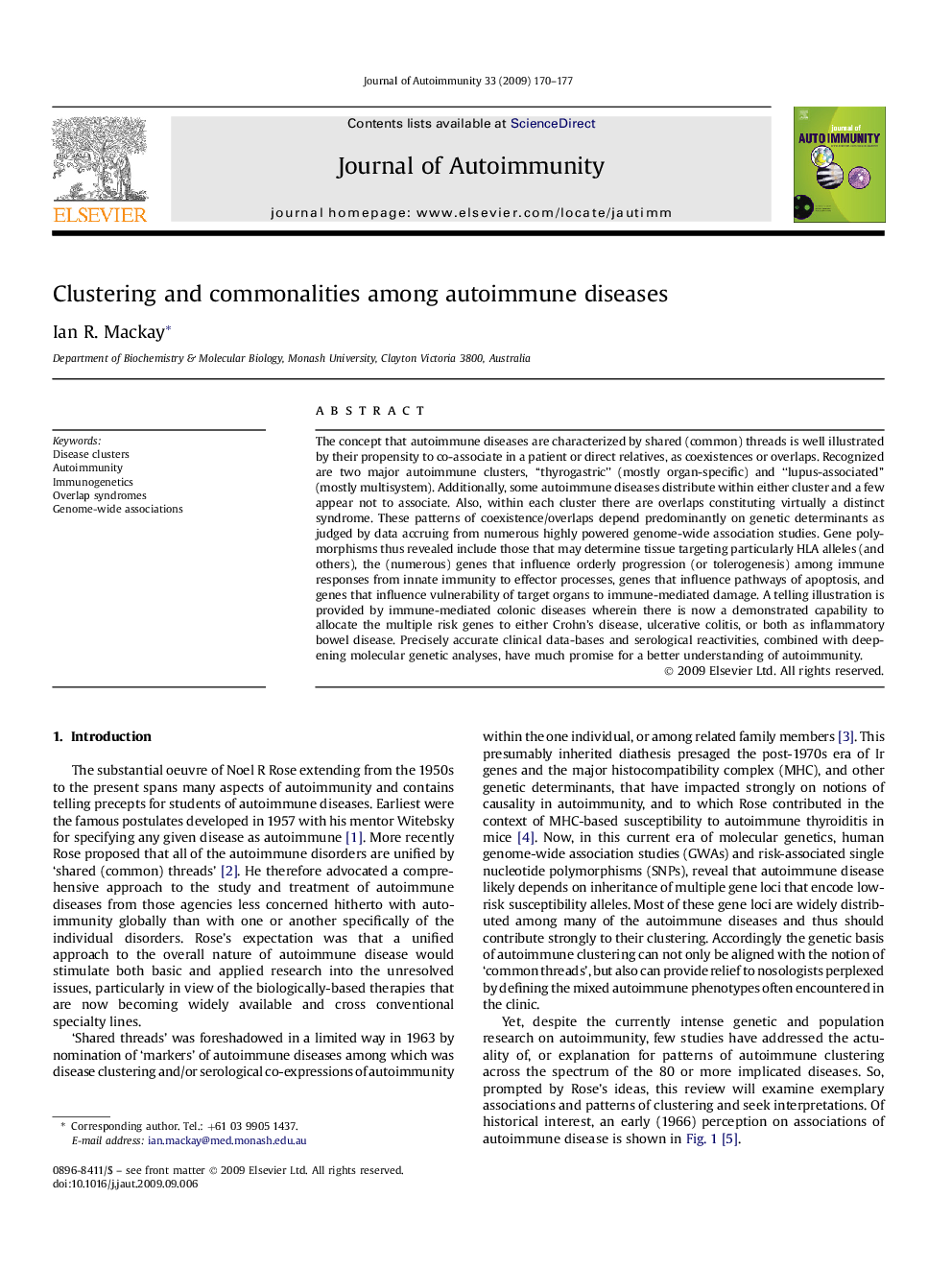| Article ID | Journal | Published Year | Pages | File Type |
|---|---|---|---|---|
| 3368200 | Journal of Autoimmunity | 2009 | 8 Pages |
The concept that autoimmune diseases are characterized by shared (common) threads is well illustrated by their propensity to co-associate in a patient or direct relatives, as coexistences or overlaps. Recognized are two major autoimmune clusters, “thyrogastric” (mostly organ-specific) and “lupus-associated” (mostly multisystem). Additionally, some autoimmune diseases distribute within either cluster and a few appear not to associate. Also, within each cluster there are overlaps constituting virtually a distinct syndrome. These patterns of coexistence/overlaps depend predominantly on genetic determinants as judged by data accruing from numerous highly powered genome-wide association studies. Gene polymorphisms thus revealed include those that may determine tissue targeting particularly HLA alleles (and others), the (numerous) genes that influence orderly progression (or tolerogenesis) among immune responses from innate immunity to effector processes, genes that influence pathways of apoptosis, and genes that influence vulnerability of target organs to immune-mediated damage. A telling illustration is provided by immune-mediated colonic diseases wherein there is now a demonstrated capability to allocate the multiple risk genes to either Crohn's disease, ulcerative colitis, or both as inflammatory bowel disease. Precisely accurate clinical data-bases and serological reactivities, combined with deepening molecular genetic analyses, have much promise for a better understanding of autoimmunity.
